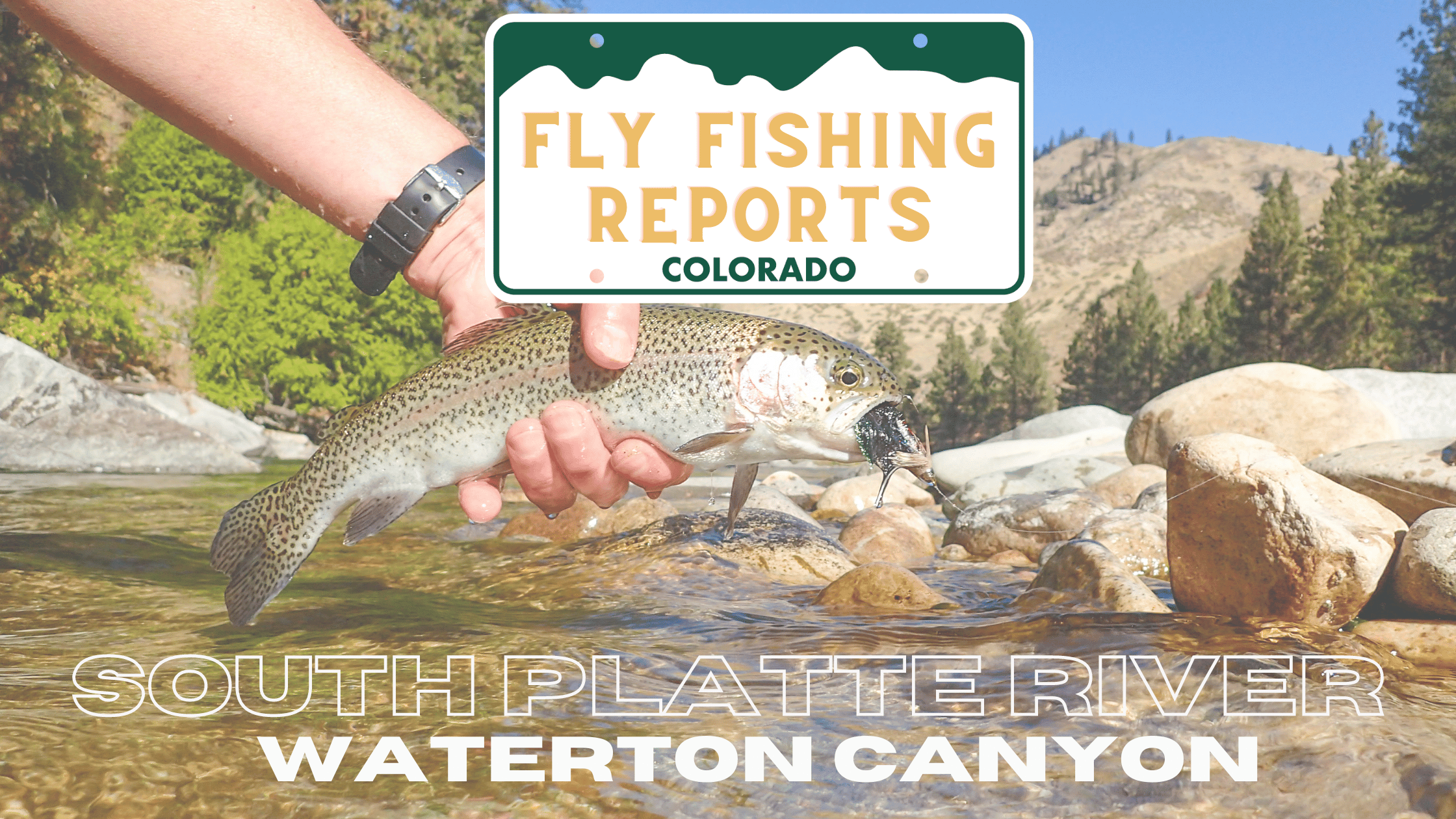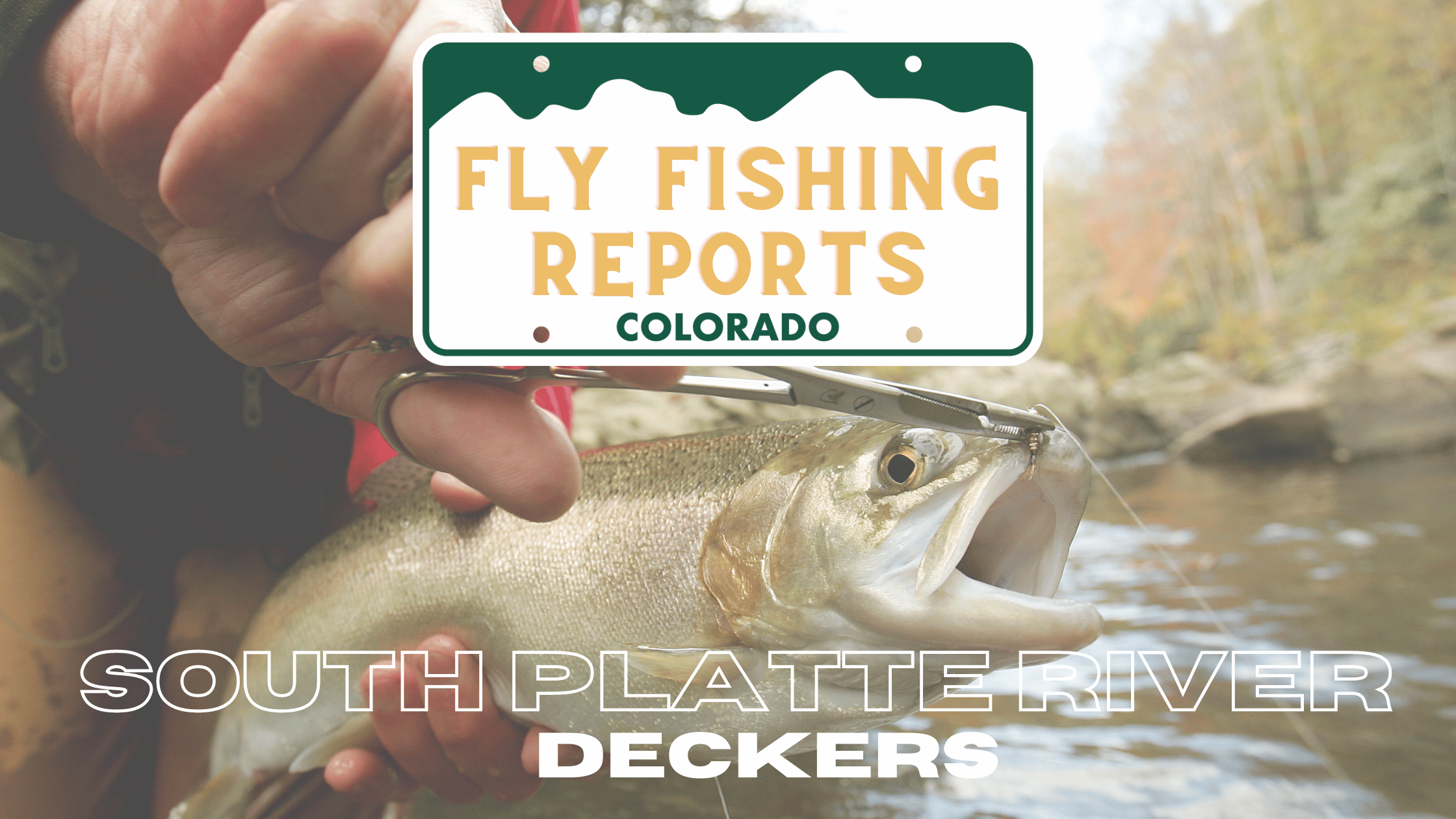Nestled in Colorado’s scenic wilderness, Cheesman Canyon offers a world-class fly fishing experience. Here’s everything you need to know before you head out.
Welcome to Cheesman Canyon section of the South Platte River Fishing Report, where the trout are as picky as your mother-in-law and just as hard to impress! This scenic stretch of the South Platte River is known for its technical challenges and breathtaking beauty. Think you’ve mastered your nymphing game? Think again—Cheesman Canyon will make you earn every strike. Load of Cheesman Canyon Fly Fishing Tips.
Table of Contents
Current Water Conditions
Best Fly Patterns
Fishing Tips for Cheesman Canyon
Weather and Access Updates
Cheesman Canyon Fishing Report – January 2024
Cheesman Canyon remains a crown jewel for winter fly fishing in Colorado. With flows between 50-75 CFS, the South Platte is running low and crystal clear, requiring technical skill and a stealthy approach. The trout here—trophy-sized browns and rainbows—are as educated as they come, holding primarily in deeper pools and slower runs. Water temperatures hover around 36-40°F, concentrating fish in warmer, sunlit areas during midday.
Mid-morning to mid-afternoon is the sweet spot for active fish, with midge hatches dominating the scene. Occasional Blue Wing Olives add variety on warmer days, while nymphing small patterns remains the bread and butter. Cheesman Canyon’s dramatic cliffs, turquoise waters, and challenging trout make it a winter destination worth every ounce of effort.
Conditions Summary
%20(2).png?width=800&height=175&name=Guide%20Rating%20(800%20x%20175%20px)%20(2).png)
- Flow Rate: 50-75 CFS
- Water Temperature: 36-40°F
- Clarity: Crystal clear
- Best Times: Late morning to mid-afternoon
- Current Conditions Rating: ⭐⭐⭐⭐ (4/5) – Challenging yet rewarding; perfect for skilled anglers seeking solitude and technical fishing.
River Flow Chart

Cheesman Canyon Hatch Chart
| Month | Primary Hatches | Effective Patterns |
|---|---|---|
| December | Midges, Blue Wing Olives | Zebra Midge (#20-24), WD-40 (#20-24) |
| January | Midges | Black Beauty (#20-24), Miracle Midge (#20-24) |
| February | Midges, Baetis (BWO) | Blue Wing Olive (#20-22), WD-40 (#20-24) |
Recommended Fly Patterns
Dry Fly 
Griffith’s Gnat (#20-24) – Great for sporadic midges on calm, sunny afternoons.
Nymph 
Zebra Midge (#20-24) – A go-to for deeper runs and pools.
Streamer 
Black Leech (#10-12) – Perfect for targeting aggressive trout in shaded areas.
Tips Fly Fishing on Cheesman Canyon
Seasonal Tip
Winter demands precision and patience. Approach pools carefully, and use long leaders with fine tippet (6x or 7x) to outwit wary trout. South Platte River Fishing Report Tips
Dry Fly
Sunny afternoons can bring sporadic rises. Look for trout sipping midges in slow-moving water and present Griffith’s Gnats delicately.
Nymphing
Double rigs with Zebra Midges and Black Beauties are essential. Use split shot to ensure your flies drift naturally in deeper holding water.
Streamer Fishing
Work smaller streamers like Black Leeches along structure and in shadowed pools. Slow retrieves are key for enticing larger trout.
Access Points
.png?width=600&height=400&name=fly%20fishing%20in%20colorado%20(74).png)
Gill Trailhead
- Description: The primary access point to Cheesman Canyon involves a moderate hike.
- Why Fish Here: Provides access to some of the most iconic pools and runs in the canyon.
- Location: Off County Road 126, near Deckers, CO.
- Locals' Rating: ⭐⭐⭐⭐
Lower Canyon Section
- Description: Easier-to-access stretches with productive holding water.
- Why Fish Here: A great option for anglers seeking slightly less technical water.
- Location: Near Cheesman Dam.
- Locals' Rating: ⭐⭐⭐⭐
Upper Canyon Pools
- Description: Scenic water above the Gill Trailhead with consistent hatches.
- Why Fish Here: Offers solitude and a chance at the canyon’s largest trout.
- Location: Accessible by hiking upriver.
- Locals' Rating: ⭐⭐⭐⭐⭐
Local Regulations and Notes on Landowner Rights
Cheesman Canyon is a Gold Medal fishery, requiring catch-and-release practices. A valid Colorado fishing license is mandatory. The area is rugged, so pack accordingly and leave no trace to preserve this pristine ecosystem.
See Colorado State Parks for Access and Colorado Division of Natural Resources for more regulations.
%20(2).png?width=1365&height=430&name=20%25%20Off%20Flyer%204x6%20(1365%20x%20430%20px)%20(2).png)
.png?width=300&height=100&name=Rise%20Beyond%20Logo%2010.29.24%20300x100px%20(2).png)
.png)
.png?width=1120&height=630&name=Colorado%20Stream%20Fly%20Fishing%20Reports%20(77).png)

